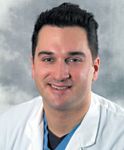- General Dermatology
- Eczema
- Chronic Hand Eczema
- Alopecia
- Aesthetics
- Vitiligo
- COVID-19
- Actinic Keratosis
- Precision Medicine and Biologics
- Rare Disease
- Wound Care
- Rosacea
- Psoriasis
- Psoriatic Arthritis
- Atopic Dermatitis
- Melasma
- NP and PA
- Skin Cancer
- Hidradenitis Suppurativa
- Drug Watch
- Pigmentary Disorders
- Acne
- Pediatric Dermatology
- Practice Management
- Prurigo Nodularis
Article
Plasma technology treats rhytides
At days 10 and 30, all patients showed at least 30 percent to 50 percent improvement in skin texture and the severity of periorbital rhytides.

In a recent study, researchers used the PSR system to treat 10 patients with Fitzpatrick skin types I through III who suffered from periorbital rhytides. Researchers gave patients one to two passes (at 1.5 to 3.5 J/cm2) of nonoverlapping pulses, with clinical assessments performed at baseline and at a series of follow-up visits. These were scheduled at 10 days, one month, three months and six months after the procedure. Clinical assessment tools used included standardized digital photography analysis, patient questionnaires and observer assessment.
Dramatic improvement At days 10 and 30, all patients showed at least 30 percent to 50 percent improvement in skin texture and the severity of periorbital rhytides. Researchers observed additional improvement at three months and six months.
When a practitioner uses PSR with ablative parameters, he says, "Dermal wounding is observed some 10 to 12 microns deep in the papillary dermis. Within five to seven days, the epidermis is completely reformed, and the redness is all but eliminated at 14 days."
As in previous tests of the equipment, researchers observed that immediately after treatment, the epidermis remained intact. However, some redness and edema of the skin eventually developed, peaking at about 48 hours post-treatment.
After that point, Dr. Tremblay says, "the epidermis was sloughed off, and new skin started forming on the smooth dermal wound."
Biologic dressing credited Researchers credit the biologic dressing created by the epidermis for significantly increasing patients' rate of healing and decreasing the intensity of their erythema. They also believe the epidermal "dressing" accounts for patients' mild side effect profiles, which included pain, pruritus and postoperative erythema.
The treatments furthermore caused no scarring or dyspigmentation. As such, patients reported mild-to-high satisfaction rates in the trial.
To help quantify the PSR system's impact on patients' number and depth of wrinkles, Dr. Tremblay plans further testing that may include profilometry. He plans to complete this testing by year's end.
For now, he says, "The PSR system is a very interesting and useful tool, because it can be used for both ablative and nonablative purposes. It offers quite a bit of flexibility. One can tailor the treatment parameters to patient-specific needs. It's a tool that most dermatologists would benefit from having in their practices."
Unique quality What makes PSR unique is its plasma energy source.
"The plasma is generated by the excitation of a nitrogen gas using electromagnetic energy," he explains. "Plasma is a combination of heat and non-coherent light energy that has a unique photothermal effect on the skin."
Further testing, he adds, should allow researchers to better understand the product's mechanism of action and further optimize its results.
Disclosure: Gyrus Medical lent Dr. Tremblay and Ronald Moy, M.D., the PSR system for use in this study. However, they report no financial interests in the company.





